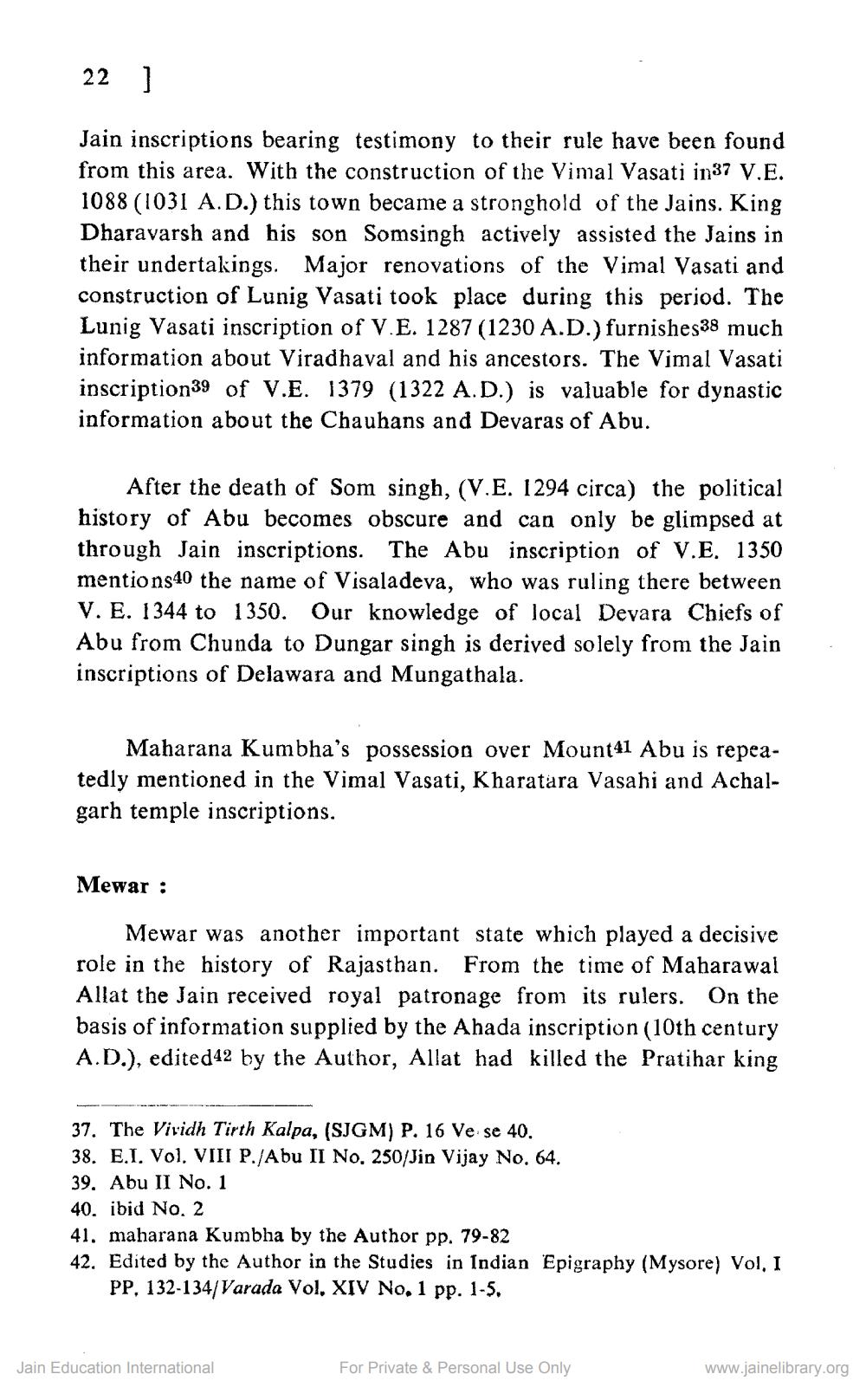________________
22
]
Jain inscriptions bearing testimony to their rule have been found from this area. With the construction of the Vimal Vasati in37 V.E. 1088 (1031 A.D.) this town became a stronghold of the Jains. King Dharavarsh and his son Somsingh actively assisted the Jains in their undertakings. Major renovations of the Vimal Vasati and construction of Lunig Vasati took place during this period. The Lunig Vasati inscription of V.E. 1287 (1230 A.D.) furnishes38 much information about Viradhaval and his ancestors. The Vimal Vasati inscription39 of V.E. 1379 (1322 A.D.) is valuable for dynastic information about the Chauhans and Devaras of Abu.
After the death of Som singh, (V.E. 1294 circa) the political history of Abu becomes obscure and can only be glimpsed at through Jain inscriptions. The Abu inscription of V.E. 1350 mentions40 the name of Visaladeva, who was ruling there between V. E. 1344 to 1350. Our knowledge of local Devara Chiefs of Abu from Chunda to Dungar singh is derived solely from the Jain inscriptions of Delawara and Mungathala.
Maharana Kumbha's possession over Mount41 Abu is repeatedly mentioned in the Vimal Vasati, Kharatara Vasahi and Achalgarh temple inscriptions.
Mewar :
Mewar was another important state which played a decisive role in the history of Rajasthan. From the time of Maharawal Allat the Jain received royal patronage from its rulers. On the basis of information supplied by the Ahada inscription (10th century A.D.), edited42 by the Author, Allat had killed the Pratihar king
37. The Vividh Tirth Kalpa, (SJGM) P. 16 Ve se 40. 38. E.I. Vol. VIII P./Abu II No. 250/Jin Vijay No. 64. 39. Abu II No. 1 40. ibid No. 2 41. maharana Kumbha by the Author pp. 79-82 42. Edited by the Author in the Studies in Indian Epigraphy (Mysore) Vol, I
PP. 132-134/Varada Vol. XIV No. 1 pp. 1-5.
Jain Education International
For Private & Personal Use Only
www.jainelibrary.org




